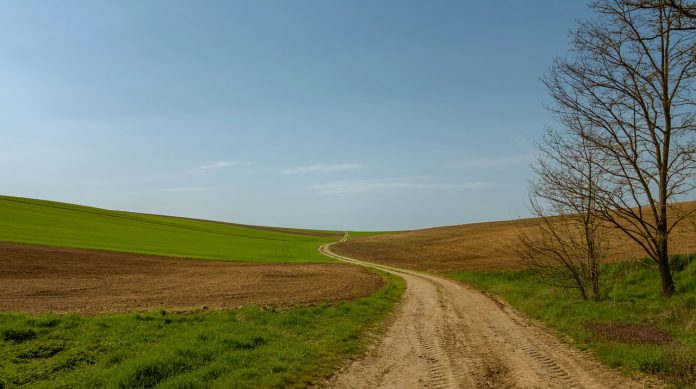In 1915, the road network in the United States was terrible and the only way to speedily travel long distances was by rail.
It was common knowledge that a car could never travel between two points as quickly as a train.
I recall that my grandfather’s comparison when something went fast was, “It’s going to beat the cars!”
Of course he was referring to railroad cars, not automobiles.
Fast as a train
Most rail lines gave their crack passenger trains between major cities the fastest engines, best engineers, and catchy names, such as the “20th-Century Limited” (New York to Chicago), the “Hiawatha” (Chicago to the Twin Cities), and the “Daylight” (San Francisco to Los Angeles.)
The St. Louisan, once considered the Pennsylvania Railroad’s “Blue Ribbon” service from New York to St. Louis, went through Indianapolis and Terre Haute, Indiana, on what was called the Vandalia Line. This fast train gave our hero, Harry O. McGee, an idea.
The car
McGee, in 1915, was a 30-year-old sales manager for the Terre Haute Cadillac dealer, Steinhart-Greiger Automobile Company.
To stir up interest in the new 1916 Cadillac, Harry, who apparently was an excellent driver, proposed that he race the St. Louisan from Indianapolis to Terre Haute, a distance of about 72 miles.
Widely advertised, and supported by the mayors of both cities and — probably reluctantly — by the railroad, the race was scheduled for Sunday, Aug. 22, 1915, although heavy rain that day forced a one week postponement.
Harry McGee chose a new 1916 Cadillac 8-cylinder, seven-passenger touring car for his attempt, which would be over a dusty, rutted and unpaved stretch of the old National Road that would eventually become U.S. Route 40.
One account of the race tells us that: “Members of the (Terra Haute) Rotary Club would be stationed at strategic points to signal McGee with white flags that the road ahead was free of meandering livestock.”
On Aug. 29, McGee threw two heavy bags of sand on the Cadillac’s rear seat floor and took two passengers, Bill Egener and one of the dealership employees, Sylvester Griffith, to add weight to the car.
The train
The type of locomotive on the train isn’t clear; no contemporary photos can be found, but a 1950 artist’s rendering of the scene shows a 4-4-0 wheel arrangement, which is possible.
These high-wheeled engines were built until 1912 and were often assigned to fast passenger trains in predominately level country.
However, the Vandalia Line was a PRR subsidiary and as such was probably required by the railroad to use standardized equipment. Most all PRR steam locomotives used the square Belpaire firebox and the locomotive in the painting shows no sign of this. But no matter.
The train engineer was Patrick Daily and his fireman was Orville Klitch, both old hands at their jobs.
Daily would be required to make the regularly scheduled stops at Plainfield, Greencastle and Brazil along the way, but even so he was confident of victory — he was running on smooth, relatively straight iron rails, while McGee had to contend with ruts, hills and curves.
The race
A bridge on West Washington Street in Indianapolis carried the National Road across the White River, and right beside it a railroad bridge performed the same duty for the railroad.
Just before noon on Tuesday, Aug. 29, McGee in his Cadillac and Daily in his locomotive lined up side by side, each on his respective bridge.
Both men carried an identical letter from Mayor Joseph E. Bell to Terre Haute’s Mayor James Gossom.
In a somewhat fanciful version of the race that was written in 2008 and published in the Greencastle, Indiana, Banner Graphic newspaper, Larry Gibbs tells us, “Precisely at noon, Bell fired a gun into the air, hundreds cheered and the race was on. McGee gunned the Cadillac, nearly tossing Griffith out of the back seat. Daily blew the locomotive’s whistle, waved to the crowd and headed out.”
The locomotive took the lead at first, but Gibbs continues the story.
“Once clear of the city McGee began to make up time, swerving and fishtailing along the dirt route. Roadside crowds, many of them picnickers on hillsides, waved their encouragement as he sped by at the head of a huge dust cloud.”
McGee reached Brazil, a small town just 16 miles from his destination, ahead of the train and sped west through the main street to the delight of the spectators, who apparently were all rooting for the car to win.
The station
Gibbs writes, “Minutes later, Daily blew the whistle as he saw the crowd waving at the (Brazil) station ahead. But as he slowed to a stop, the engineer could not believe what he was hearing. ‘You’re too late!’ came cries from the crowd. ‘He already went through!'”
A dusty Cadillac and equally dusty Harry McGee and his companions were waiting at the Terre Haute station when a humiliated Daily brought in The St. Louisan, 12 minutes behind the intrepid motorist, who had made the 72-mile run in 77 minutes — pretty good for 1915.
McGee’s triumph was short-lived, however. The very next Sunday, Daily made the same run in only 68 minutes, bettering McGee’s time by nine minutes.
It’s not recorded whether or not Harry McGee sold a lot of Cadillacs as a result of his stunt, and the man would have quickly been forgotten if it weren’t for his next venture.
But that story, which involves trackless trains, the MGM Movie Studio, Hollywood starlets, World tours, and even a circus and a Wild West show, are fodder for a future column.














It was Orville, KITCH, not Klitch. He was my great-uncle.